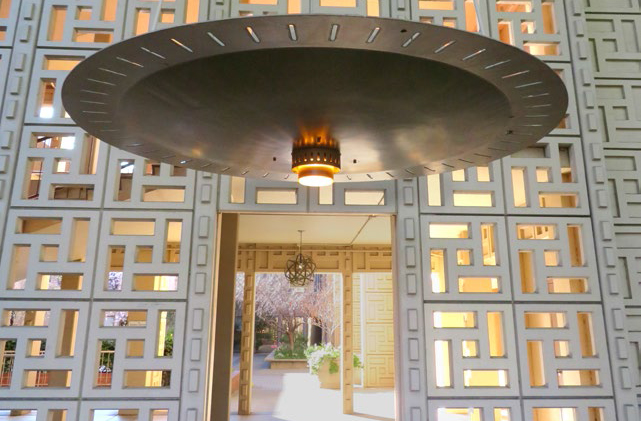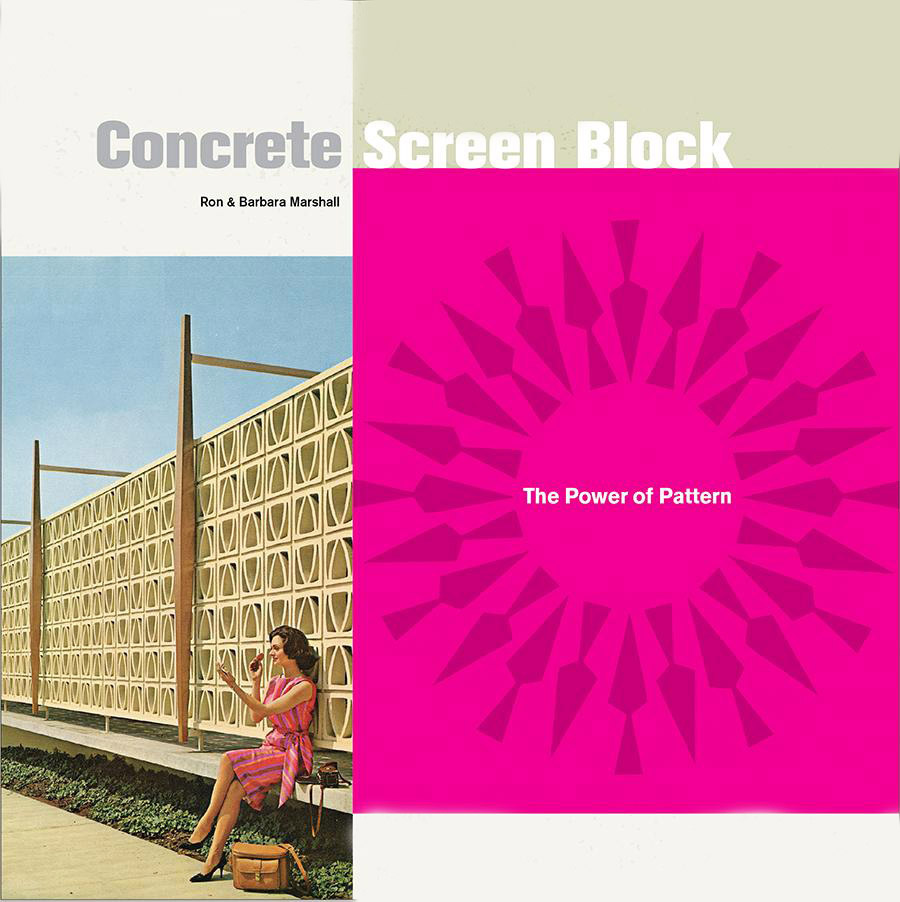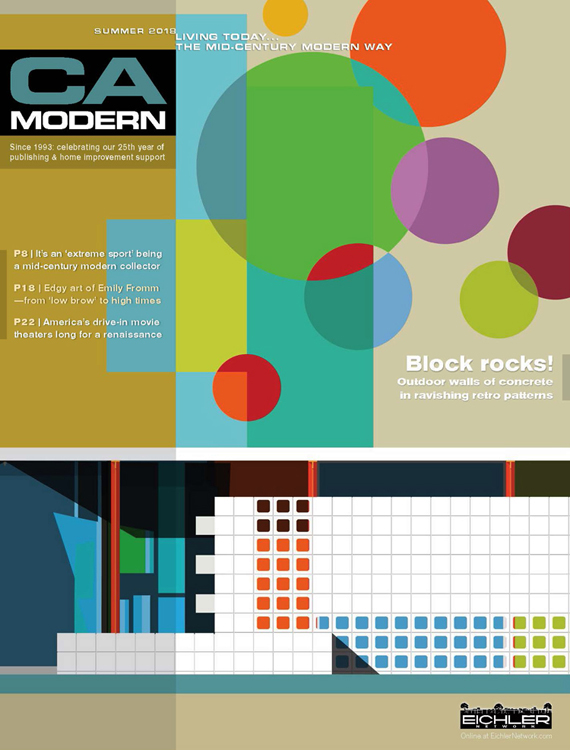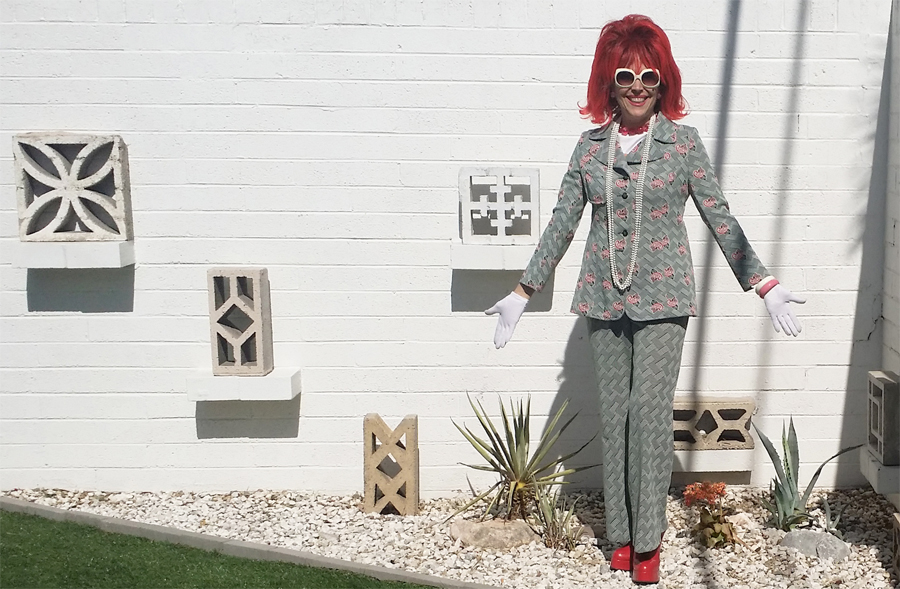Vital MCM Building Blocks
 |
|
Our new article, plus a new book by Ron and Barbara Marshall, together tell the story of this vital building block of mid-century modern construction. Above: Block-lined Stanford Medical Center, designed by Edward Durell Stone. Photo: Dave Weinstein |
 |
|
|
 |
|
|
 |
|
|
|
|
Neither Ron Marshall nor Jack LeVine set out to become world-class experts of the decorative concrete block and celebrate its important historic role as a mid-century modern building material. But both did—each in his own way.
Marshall was a government regulations writer pondering a childhood attraction to one Washington, D.C. building when his fascination led him to co-author Concrete Screen Block: The Power of Pattern, the definitive new book on the subject.
And LeVine? A Las Vegas realtor specializing in mid-century modern, LeVine's own 1954 home had a backyard wall perforated with holes, a design feature that provided a little too much visual access to his pet beagles by the Chihuahuas next door. He came across decorative blocks he liked, and he began filling in the holes—one at a time.
Thirty-some different blocks used in Las Vegas construction are now displayed in LeVine's impromptu backyard collection, and he's run out of readymade display space: "All those holes have been filled. We're struggling now when we find a new one."
While that array perhaps puts LeVine at the forefront of collectors of the sometimes maligned decorative blocks, it barely scratches the surface of the ground covered by either 'Concrete Screen Block' from Ron and his co-author, wife Barbara Marshall; or 'Blocks of Beauty,' Jack Levitan's latest feature in the new Summer '18 issue of CA-Modern magazine.
"Decorative concrete block—whether perforated to form screens or with projecting sections to create shadows—flourished starting circa 1955," states 'Blocks of Beauty,' which sources both the Marshalls and LeVine. It adds, "Yet by the start of the 1970s decorative concrete blocks were falling out of fashion."
As for what has prompted the Marshalls to document 273 original patterns of screen block and write their exhaustive book on the topic, Ron started a recent interview admitting, "We were always fascinated by it."
For Ron, that fascination started with the facade of the Kennedy Center for the Performing Arts in Washington, D.C. (1971), then expanded when he and Barbara began noticing widely varied block work in myriad locales ranging from Florida to California to Hawaii to New Zealand.
Both the CA-Modern story and the Marshalls' book trace the formal architectural tradition of screen block to the French concept of brise soleil, or sun break. Predictably, such screens have always been more popular in climates and designs where blocking persistent sunshine was a necessity. This helped inspire architect Edward Durell Stone's landmark use of the material in the American embassy for New Dehli, India, he designed in the mid-1950s.
"It's hard for us to appreciate how spectacularly that arrived on the scene," says Marshall of the building, which debuted in 1959, that landed Stone on the cover of Time magazine and garnered him commissions like the Kennedy Center. It also popularized a ubiquitous look of 1960s-era housing, especially in warmer regions.




